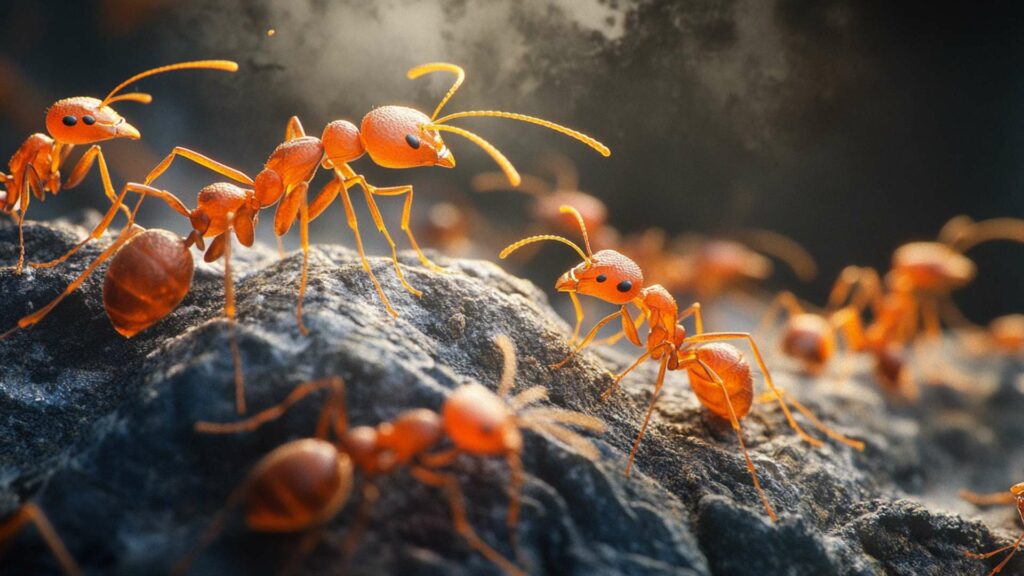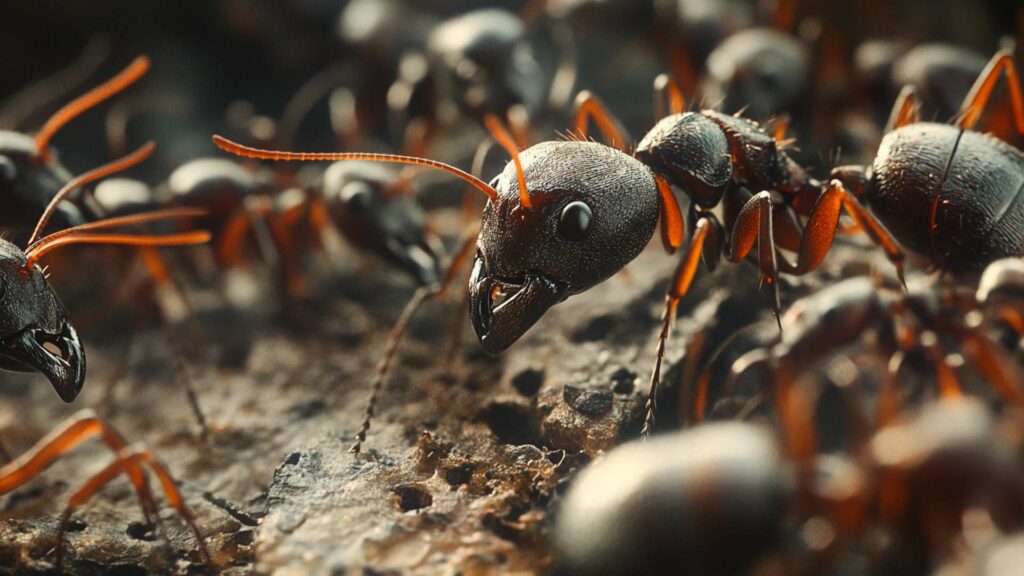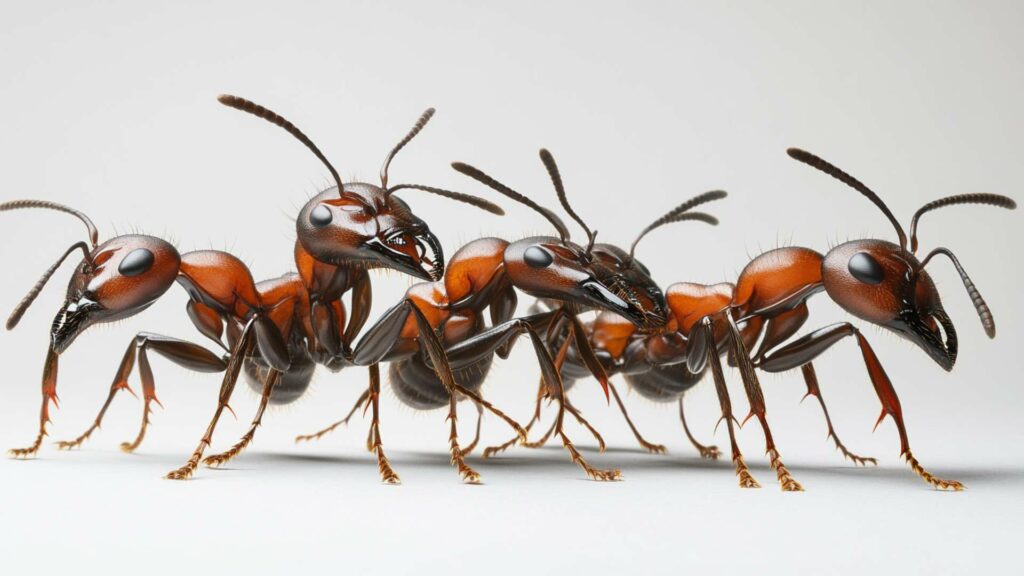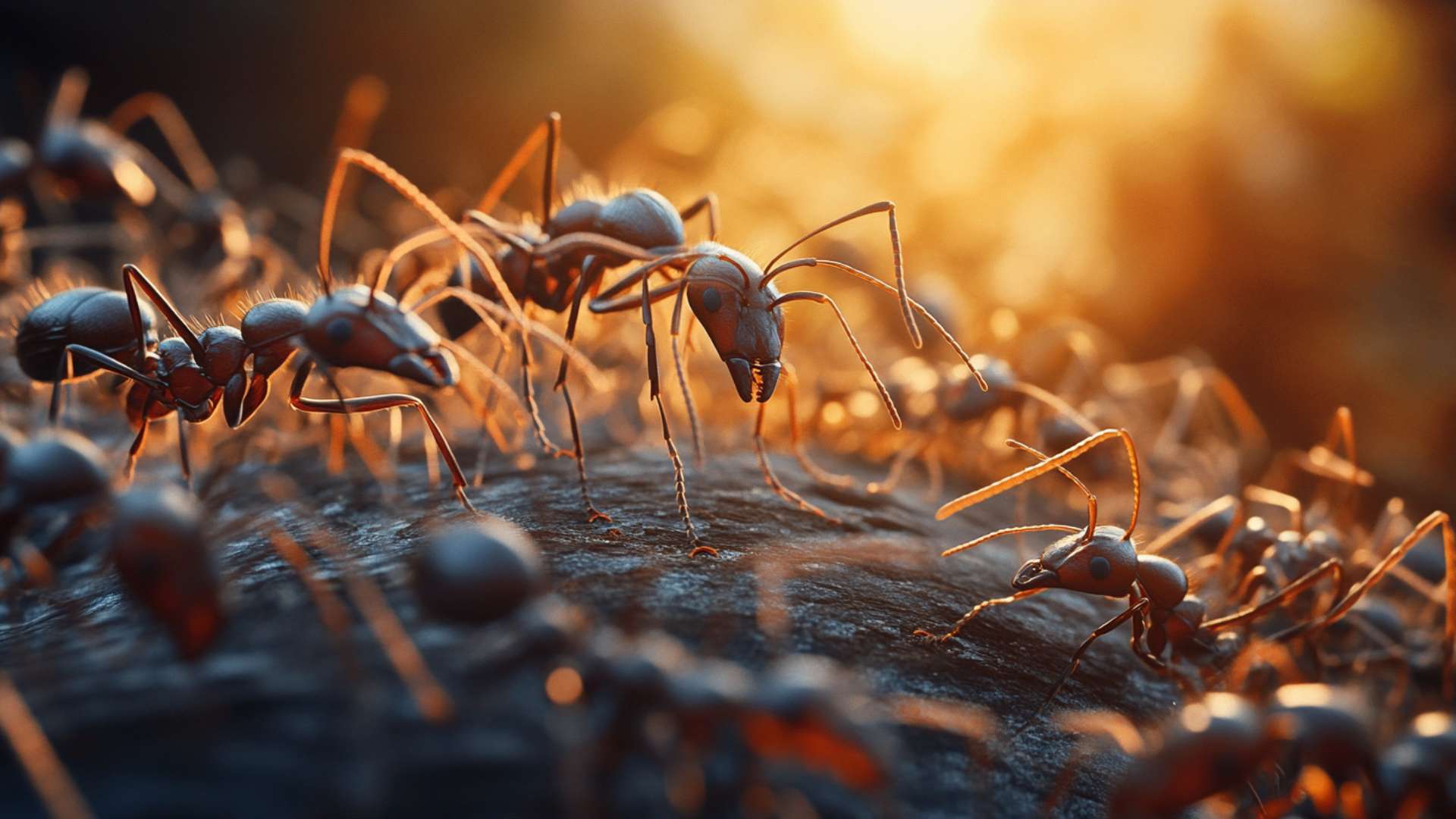Ant eggs, those tiny marvels of nature, hold the key to understanding the intricate lives of these industrious insects. While often overlooked in favor of their larger counterparts, ant eggs play a crucial role in the survival and growth of ant colonies. By delving into the realm of ant eggs, we unlock a deeper understanding of their lifecycle and gain insight into the fascinating world that exists right beneath our feet.
Importance of Understanding Ant Eggs

Why should we bother studying ant eggs, you may wonder? Well, my curious reader, it turns out that comprehending these minuscule gems is integral to comprehending the entire ant ecosystem. Just like any other species on this planet, ants have their own unique life cycle.
By examining this cycle at its very beginning—the moment an egg is laid—we gain valuable insights into how ants are born and how they grow into the bustling communities we so often encounter. Furthermore, understanding ant eggs allows us to appreciate not only their contribution to the colony but also their significance in relation to other insects.
This knowledge becomes especially valuable when considering pest control methods or conservation efforts that require distinguishing between different types of insect eggs. Thus, recognizing what ant eggs look like can be a powerful tool in identifying and controlling potential infestations or protecting delicate ecosystems.
An Overview of the Ant Life Cycle
Now that we recognize the importance of studying these tiny capsules of an ant’s life cycle, let’s dig deeper into the mesmerizing journey from egg to adult for our industrious little friends. The life cycle starts when a queen ant finds herself ready to initiate her own colony. She lays her first batch of precious ant eggs within suitable nesting grounds she carefully selected.
Once laid by their maternal queen, these eggs hatch minute oval-shaped wonders that resemble small pearls or elongated grains of rice. However, the appearance of ant eggs can vary depending on the species.
Some appear white, while others may be yellow or even translucent. It’s crucial to note that each species has its own distinct characteristics when it comes to its eggs.
As we delve into the following sections of this article, we will explore how these seemingly unassuming ant eggs hold the power to shape entire colonies and influence the lives of countless worker ants. So buckle up as we embark on a journey through the mysterious, captivating world of ant eggs!
Appearance of Ant Eggs
Ant eggs come in various sizes and shapes depending on the species. They are generally tiny, measuring around 0.5 to 2 millimeters in length. To give you an idea, they are comparable in size to a grain of sand or a small seed.
Most ant eggs have an oval shape, resembling tiny grains or miniature footballs. However, it’s important to note that there can be variations between different ant species.
Comparison with Other Insect Eggs
When it comes to comparing ant eggs with those of other insects, you’ll notice distinct differences. Unlike some insect eggs that are laid individually or in small clusters, ants lay their eggs in large numbers close together within the nest chambers.
This is because ants rely heavily on cooperation and communal care for their young ones’ development. Another notable difference is the egg size itself; while some insect eggs may be larger and more visible to the naked eye, ant eggs are incredibly small and often require magnification to be properly observed.
Color and Texture of Ant Eggs
The coloration of ant eggs can vary among species but generally falls within a range of white, yellow, or translucent shades. The specific color depends on factors such as pigmentation and whether the eggs are freshly laid or have undergone developmental changes.
Regarding texture, ant eggs possess a smooth surface overall but can sometimes exhibit slight bumps or ridges upon closer inspection. These irregularities are usually subtle and won’t drastically alter the appearance of the egg.
Understanding the appearance of ant eggs is crucial for identifying them correctly within an infestation scenario or when studying their behavior in natural environments. Now let’s delve into how these tiny marvels develop through embryonic stages under the care of their queen and worker female ants together.
Development Stages of Ant Eggs
Egg-laying process by the queen ant: From Sacred Duty to Colony Expansion
Within the intricate social hierarchy of an ant colony, the queen plays a pivotal role in ensuring its survival and growth. As an indomitable matriarch, she carries the responsibility of laying eggs, which are vital for colony persistence. The extraordinary egg-laying process commences when the ant queen first finds a suitable location within the nest to establish her egg-laying chamber.
This secluded spot provides protection and ideal conditions needed for successful development. Once settled, she begins her sacred duty by meticulously depositing individual eggs into small cells within the chamber.
Quantity and location of egg-laying: A Testament to Reproductive Capacity
The remarkable reproductive capacity of ant queens is awe-inspiring. Depending on the species, these regal creatures can lay an astonishing number of eggs during their lifetime. Some ant queens may lay dozens or even hundreds of eggs each day, while others may surpass a thousand!
The precise quantity depends on various factors like species, environment, nutrition availability, and overall health of the queen. Furthermore, where these industrious egg-layers choose to deposit their precious cargo is no arbitrary decision.
Ant queens strategically distribute their eggs throughout different areas within their nests. This dispersal ensures that young ants develop in diverse environments with varying conditions—contributing to overall colony resilience.
Role of pheromones in egg-laying behavior: Nature’s Chemical Messengers
The enigmatic world of ants revolves around chemical communication—an intricate dance conducted through a mysterious language of pheromones. These chemical messages play a crucial role not only in organizing tasks within a colony but also in guiding crucial reproductive behaviors like egg-laying. During the process of egg deposition, ant queens release specific pheromones that signal the presence of eggs to worker ants.
These signals trigger a cascade of responses, prompting diligent adult worker ants to care for the eggs and maintain optimal conditions in the surrounding environment. The orchestration of such complex behaviors through chemical signals is a testament to the evolutionary marvel that is the ant colony.
Embryonic development inside the egg: Nature’s Marvels Unveiled
Within each tiny ant egg lies the beginnings of a fascinating journey—the development from an unassuming speck to a fully formed member of their respective ant species. Inside these delicate shells, remarkable transformations occur, shaping young ants into individuals ready to serve their colony. The formation of body segments and appendages into adult ants occurs during embryogenesis—the process by which an ant’s life begins within its egg.
Gradually, as cells divide and differentiate, intricate anatomical structures take shape, including legs, antennae, and even internal organs. As this miraculous transformation unfolds within each microscopic egg sac, it serves as a reminder of nature’s prodigious ability to sculpt life in even its tiniest creations.
Growth rates and durations during embryonic development can vary significantly across different ant species. Some species of male ants may experience rapid growth with short incubation periods before hatching into larvae, while others may have slower developmental rates spanning weeks or even months.
The specific duration depends on various factors such as environmental conditions and evolutionary adaptations unique to ant nests of each species. Understanding the development stages of ant eggs unveils a captivating narrative embedded within these minuscule wonders.
From the queen’s sacred duty of laying eggs while harnessing pheromonal cues for guidance to the astonishing precision in forming body segments during embryogenesis—each stage holds valuable insights into how ants reproduce and thrive as colonies. As we continue our exploration into this miniature realm filled with intricate life cycles and ingenious adaptations, we gain profound appreciation for these small insects that wield extraordinary influence over our ecosystems.
Protection and Care for Ant Eggs
Ants are social insects that lay their eggs in carefully constructed nests. These nests, often built underground or within cavities, serve as a fortress to protect the vulnerable ant eggs from potential threats.
The architecture of these nests is quite fascinating, with designated chambers or cells specifically designed for egg storage. These chambers are strategically located within the nest to provide optimal protection and support for the developing eggs.
Specific Chambers or Cells for Egg Storage
Within an ant colony, specialized chambers or cells are created solely for the purpose of housing and safeguarding ant eggs. These individual chambers vary in size and structure depending on the species of ants.
The queen ant meticulously selects suitable locations to lay her eggs, carefully placing them into these specially constructed compartments. This segregation ensures that each egg receives proper attention and protection from external factors.
Temperature and Humidity Regulation
Maintaining the right temperature and humidity is vital for the successful development of ant eggs. Ants reproduce in large numbers, so creating ideal conditions within their nests becomes crucial to support multiple mouths that will soon hatch from these tiny eggs.
Worker ants play a significant role in regulating the nest’s microclimate by continuously monitoring temperature levels and adjusting humidity through various mechanisms such as ventilation, moisture control, and insulation techniques. This dedication to maintaining optimal conditions demonstrates the meticulous care provided by female worker ants, towards ensuring successful hatching and survival of future members of their colony.
Significance of Ant Eggs to the Colony

Ant eggs play a crucial role in the growth and survival of an ant colony. As the first stage of ant pupae development, they represent the future generation of workers, soldiers, and potentially new queens.
The number of eggs laid by ant queens depends on various factors such as species, colony size, and environmental conditions. A thriving ant colony relies on a continuous supply of new workers to support multiple mouths to feed and perform various tasks essential for the entire colony’s survival.
Egg-to-adult transformation process
The journey from an ant egg to an adult ant goes through several stages: egg, larvae, pupae, and finally emerging as an adult. After being laid by the queen ants into specially designated chambers or cells within an ant nest, ant eggs undergo metamorphosis.
Although each species may have its distinct timeline for development to lay eggs, typically it takes about three weeks for an egg to develop into an adult worker (although some species might take longer). During this process, significant changes occur inside the egg as body segments form and appendages take shape.
Ant eggs contribute significantly to population dynamics within a colony. The number of eggs produced affects both short-term growth rates and long-term stability of ant farms.
A higher number of viable eggs means more potential workers or future reproductive individuals (queens or males) that can help the ant reproduce and establish new colonies. Understanding how different environmental factors influence egg production can shed light on population fluctuations in different ant species.
Potential uses for humans

The study of ant embryonic development provides valuable insights into broader topics related to embryology and developmental biology. Due to their relatively large size compared to other insect embryos, studying the ant larvae and eggs offers researchers a unique opportunity to observe and analyze various developmental processes. By understanding the intricate mechanisms behind ant embryonic development, scientists can gain knowledge applicable to other organisms and even human development.
Ant eggs have also shown promise in medical research. Their embryos contain a range of proteins and other bioactive compounds that could be of interest for scientific exploration. For example, certain antimicrobial substances found within ant eggs might hold potential for developing new antibiotics or antimicrobial agents.
Additionally, studying the development of salivary glands in ants could provide insights into the understanding and treatment of disorders related to glandular secretions in humans. Ant eggs play a vital role in the growth and survival of ant colonies.
From their contribution to colony dynamics by supporting population growth to their potential applications in medical research, these tiny oval-shaped egg sacs hold much significance beyond their humble appearance. Understanding the transformative journey from egg to adult not only reveals the complexities of ant life but also offers valuable knowledge for broader scientific endeavors.
Conclusion: Appreciating the Intricacies of Ant Eggs
As we conclude our exploration into the captivating world of ant eggs, it becomes evident that these tiny oval-shaped entities are far from insignificant. They hold within them the promise of future generation’s own ant colonies and contribute immensely to the survival and growth of ant colonies.
The diversity in appearance, ranging from white to yellow and translucent, mirrors the vast array of ant species found across the globe. Each species has its unique approach to egg-laying, nest architecture, and care-taking of other ants that ensures optimal conditions for their development.
Delving deeper into ant egg development reveals remarkable intricacies that often go unnoticed by our naked eyes. Within those seemingly inconspicuous eggs lie embryonic stages where body segments and appendages gradually take form.
The eggs receive meticulous attention from both queen ants and worker ants who tirelessly maintain temperature and humidity levels within their nests to safeguard these delicate entities. It is awe-inspiring to witness how this small, seemingly mundane aspect plays a pivotal role in supporting multiple mouths within an ant colony.
As we contemplate the significance of understanding what ant eggs look like, it becomes clear that there is more than meets the eye. Beyond their role in sustaining ant populations, these minuscule grains encapsulate knowledge waiting to be unraveled by scientists studying embryonic development or potential medical research applications. By appreciating nature’s wonders on a microscopic scale, we open doors for profound discoveries with implications extending far beyond just ants.
Let us not underestimate the importance of ant eggs in the grand tapestry of life. They represent hope for future generations of queen ants and embody the incredible diversity and adaptability of these industrious insects.
By recognizing the intricate details surrounding ant egg development, we gain a deeper appreciation for the complexities of the natural world. So, next time you spot those tiny grains resembling ant eggs, take a moment to marvel at their potential and the remarkable journey that lies ahead.
Dissuade Ants with D-Termination: Las Vegas’ Leading Pest Control Service!

If you’re grappling with ant problems, D-Termination is here to provide assistance. Our proficient team excels at discouraging ants, rejuvenating cleanliness, and preserving the integrity of your surroundings. Bid farewell to ants—opt for D-Termination for effective pest control today!
Get in touch with us at 702-919-6310 or visit dtermination.com to schedule your ant control service and regain your space from these unwanted pests.
Frequently Asked Questions:
Ants usually place their eggs in nests or chambers within their colonies.
To get rid of ant eggs, it’s essential to target the ant colony using bait or insecticides.
Ant eggs are quite small and often not visible without magnification.
Eliminating both ants and their eggs requires using effective ant control methods that target the colony.








